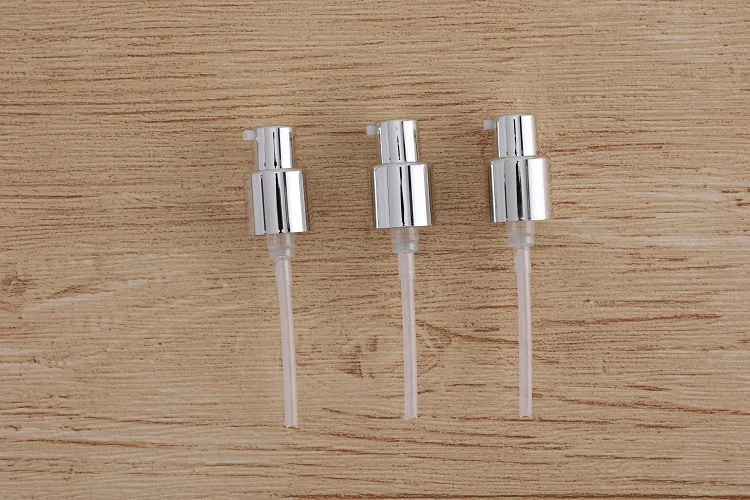yanxu's blog
Polyacrylamide(PAM for short) is an important oilfield additive and is widely used in oilfield development and production processes. It plays a variety of roles in the oil field, including thickening agent, dispersant, fluid control agent, etc. This article will discuss the chemical properties of Polyacrylamide, its application in oil fields and its impact on oil field development.

First, let's understand the chemical properties of PAM. PAM is a linear polymer polymerized from acrylamide monomer. It has good water solubility and high molecular weight, and can form stable aqueous solutions. PAM molecules contain a large number of polar groups, which give them excellent adsorption properties and surface activity. These characteristics provide the basis for its application in oil fields.
In oil field development, PAM can be used as a drilling fluid additive. The function of Polyacrylamide is to adjust the rheology of drilling fluid, carry cuttings, lubricate the drill bit, and promote drilling. In addition, it can greatly reduce drill stuck accidents, reduce equipment wear and prevent leakage and collapse.
PAM can also be used as an oil displacing agent. Polyacrylamide with high ionicity can be added to the injected water as an oil displacing agent to change the physical and chemical properties of the formation, improve the interaction between crude oil and water, promote the flow of remaining oil, and increase the recovery rate of crude oil.
PAM can also be used as a water blocking agent. PAM chemical water blocking agent has a selective effect on oil and water penetration, reduces oil penetration and water penetration, and can be used without cross-linking. Polyacrylamide can also be used to adjust formation water absorption curves and plug large pores.
In oil field development, the application of polyacrylamide has a positive impact on the oil field development and production process. First of all, the use of PAM can improve the development efficiency of oil fields, increase crude oil production, reduce mining costs, and improve the economic benefits of oil fields. Secondly, PAM can improve environmental protection and production safety during oil field development, reduce pollutant emissions, protect groundwater resources, and improve the sustainable development capabilities of oil fields.
However, it should be noted that there are also some potential problems and challenges in the application of polyacrylamide in oil fields. First, the high molecular weight and water solubility of PAM may lead to penetration and decomposition during the injection process, thereby affecting its thickening and dispersion effects. Secondly, the use of PAM requires strict control of dosage and concentration to avoid adverse effects on groundwater and the environment. Therefore, during the application process of PAM, monitoring and management need to be strengthened to ensure that it functions safely and effectively.
In summary, polyacrylamide, as an important oilfield additive, plays an important role in oilfield development and production. Through its thickening, dispersion and fluid control functions, PAM can improve the development efficiency of oil fields, improve the production environment, and promote the sustainable development of oil fields. However, attention needs to be paid to its potential problems and challenges, and management and monitoring need to be strengthened to ensure its safe and sustainable application. It is believed that with the continuous advancement of technology and the accumulation of application experience, the application of PAM in oil fields will become more extensive and mature, bringing more benefits to oil field development and production.
https://www.scdbwhb.com/Exploring-the-multiple-roles-of-polyacrylamide-in-the-oil-field.html
Tie rod cylinders are important components in hydraulic systems and are used to convert fluid power into linear mechanical force. They are commonly used in a variety of industrial applications, including construction equipment, agricultural machinery, and manufacturing processes. However, like any other hydraulic component, tie rod cylinders are susceptible to corrosion, which can lead to reduced performance, damage, or even failure. In this article, we will discuss some anti-corrosion measures you can take to ensure the longevity and reliability of tie rod cylinders.
Material selectionThe first and most critical step in preventing corrosion on tie rod cylinders is choosing the right materials. The cylinder block and end cover should be made of corrosion-resistant materials such as stainless steel or aluminum. The piston rod should also be made of corrosion-resistant material, such as chrome-plated steel. Seals and bearings should be made of materials that are compatible with the hydraulic fluid and resistant to corrosion.
Surface treatmentSurface treatment is another effective way to prevent corrosion on tie rod cylinders. Cylinder blocks and end caps can be treated with protective coatings, such as anodizing or electroplating, to create a barrier between the metal and the environment. The piston rod can also be chrome-plated or ceramic-coated for extra protection against corrosion. The surface treatment should be selected based on the specific application and use environment of the cylinder.
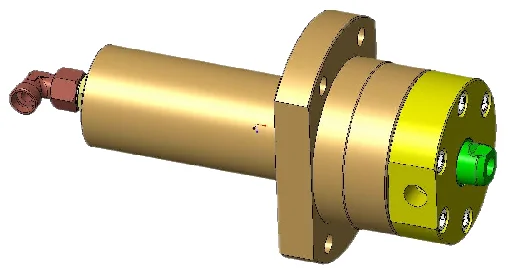
Proper maintenance is essential to prevent tie rod cylinders from corroding. Cylinders should be cleaned regularly to remove dirt or debris that may promote corrosion. Hydraulic oil should be checked regularly and replaced according to the manufacturer's recommendations. It's also important to make sure the hydraulic fluid is at the correct level and the filter is clean and working properly. Any leaks or damage should be addressed immediately to prevent corrosion from spreading.
Environmental controlEnvironmental control is another effective way to prevent corrosion on tie rod cylinders. Cylinders should be protected from moisture, salt, and other corrosive substances. If the cylinder is used in a harsh environment, such as marine or coastal applications, additional measures may be required, such as the use of protective caps or the application of corrosion inhibitors. It is also important to ensure that cylinders are not exposed to extreme temperatures or humidity that could promote corrosion.
Corrosion inhibitorCorrosion inhibitors are compounds that can be added to hydraulic fluids to prevent corrosion of tie rod cylinders. The function of these inhibitors is to form a protective film on the metal surface to prevent corrosive substances from coming into contact with the metal. Corrosion inhibitors should be selected based on the specific application and the type of hydraulic fluid used. Manufacturer's recommendations for the proper use and concentration of corrosion inhibitors must be followed.
In short, tie rod cylinders are an important part of the hydraulic system, and their life and reliability depend on effective anti-corrosion measures. Material selection, surface preparation, proper maintenance, environmental controls, and corrosion inhibitors are all effective ways to prevent corrosion on tie rod cylinders. By taking these steps, you can ensure that tie rod cylinders operate reliably and efficiently, providing long-lasting performance for your industrial applications.
https://www.toringcylinder.com/Protect-your-investment-effective-anti-corrosion-measures-for-tie-rod-cylinders.html
Optical modules are an indispensable component of modern communication networks, and they play a vital role in data transmission and communication. However, there are some important things to note when using it to ensure that it functions properly and gets the most out of it. This article will discuss the precautions for using optical modules to help readers better understand how to use and maintain them correctly.
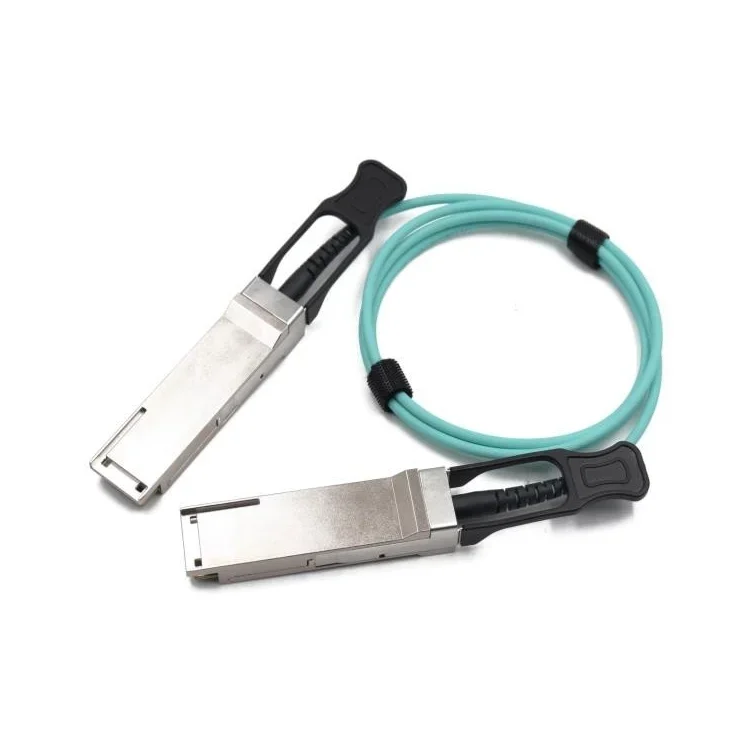
1. Temperature control: The optical module is very sensitive to temperature, so it needs to be ensured to be within a suitable temperature range during use. Too high or too low temperature may cause the performance of the optical module to decrease or even be damaged, so pay attention to the control of ambient temperature.
2. Cleaning and maintenance: The optical components of the optical module need to be kept clean. Any dust or dirt may affect the transmission quality of the optical signal. Therefore, during installation and use, ensure that the optical components are clean and perform regular maintenance.
3. Fiber optic connection: Correct fiber optic connection is crucial for the normal operation of the optical module. When connecting optical fibers, ensure the quality of the optical fibers and the stability of the connection to avoid signal attenuation or disconnection due to poor connections.
4. Electrical interface: The electrical interface of the optical module also needs to be protected from static electricity or other electrical interference. Proper wiring and grounding are key to ensuring the proper functioning of electrical interfaces.
5. Compatibility check: When using, ensure its compatibility with other devices. Optical modules produced by different manufacturers may have compatibility issues, so sufficient compatibility checks must be performed when selecting and using optical modules.
6. Power consumption management: The power consumption of optical modules is also a factor that needs to be considered, especially in large-scale applications. The power consumption of optical modules must be reasonably planned based on actual needs and system capacity to avoid overload or waste.
7. Quality assurance: Choose high-quality optical module suppliers and use and maintain optical modules in strict accordance with their regulations to ensure their performance and reliability.
In short, optical modules play an important role in modern communication networks. The correct use and maintenance of optical modules is crucial to ensuring the stable and reliable operation of communication networks. Precautions for using optical modules involve many aspects such as temperature control, cleaning and maintenance, optical fiber connection, electrical interface, compatibility check, power consumption management, and quality assurance. Only by strictly complying with these precautions can the optical module work stably and reliably and provide good support for communication and data transmission.
https://www.fineconnco.com/Optical-modules-application-guide.html
A pressure sensor is a device used to measure pressure and has a wide range of applications in industrial, medical, automotive, aerospace, and other fields. The structural composition of the pressure sensor is very complex. It includes multiple components and technologies. Let's introduce it in detail below.
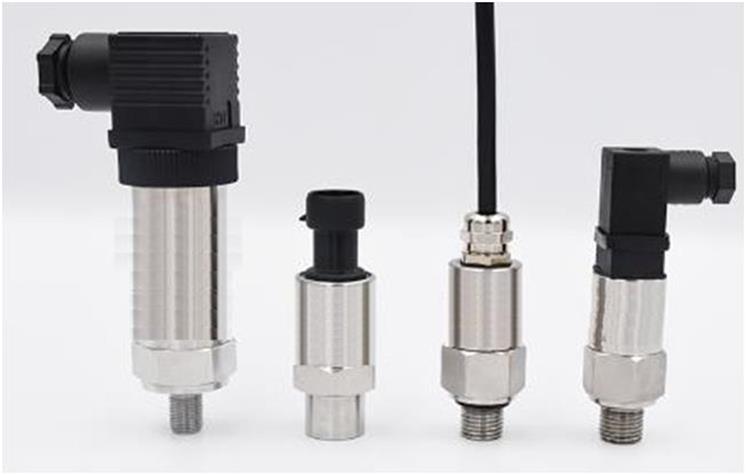
First of all, one of the most important parts of the pressure sensor's structural composition is the sensing element. The sensing element is the core component that converts pressure into electrical signals. Its selection directly affects the performance and accuracy of the sensor. Common sensing elements include piezoresistive, piezoelectric, capacitive, and electromagnetic types. Among them, the piezoresistive sensing element is the most common one, which uses the piezoresistive effect of the material to convert pressure into resistance value. The piezoelectric sensing element uses the piezoelectric effect to convert pressure into a charge or voltage signal. Capacitive sensing elements use changes in capacitance to measure pressure. Different sensing elements have their own advantages and disadvantages, and choosing the appropriate sensing element is crucial to the performance of the sensor.
Secondly, the structure of the pressure sensor also includes a signal processing circuit. The signal output by the sensing element is often weak and needs to be amplified, filtered, and linearized by the signal processing circuit in order to obtain accurate pressure values. The design and manufacturing of signal processing circuits need to take into account the characteristics of the sensing element and the requirements of the working environment to ensure the stability and reliability of the sensor.
In addition, the structural composition of the pressure sensor also includes mechanical structure and seals. The mechanical structure is an important part used to support and protect the sensing element. It needs to have sufficient stiffness and durability to adapt to various complex working environments. At the same time, the design of the seal is also crucial. It needs to ensure that the sensing element is not corroded and contaminated by external media to ensure the long-term stable operation of the sensor.
In addition, the structure of the pressure sensor also includes a temperature compensation circuit and a communication interface. The temperature compensation circuit is used to correct the output of the sensor at different temperatures to improve the accuracy and stability of the sensor. The communication interface is used to transmit sensor data to external devices for monitoring and control. The design of the communication interface needs to take into account the compatibility of the sensor and external devices and the selection of communication protocols to ensure reliable transmission and processing of data.
In general, the structure of a pressure sensor is a complex and sophisticated system, which includes sensing elements, signal processing circuits, mechanical structures, seals, temperature compensation circuits, and communication interfaces. These parts need to fit closely to ensure good sensor performance and reliability. With the continuous advancement of science and technology, the structural composition of pressure sensors is also constantly innovated and improved to meet the needs of pressure measurement in different fields.
https://www.dejintech.com/internal-structure-and-working-principle-of-pressure-sensor.html
In industry and engineering, the correct operation of valves is critical to the safety and reliability of the system. In order to ensure that the valve opens or closes in the correct sequence and to avoid accidents, multi-turn valve interlock came into being. This article will explore the role and advantages of multi-turn valve interlocks and their importance in industry and engineering.
EffectThe main function of the Multi-turn valve interlock is to ensure that the valve operates in the correct sequence to meet specific process requirements and safety standards. It prevents misuse or intentional misoperation, thereby protecting systems and equipment from damage or personnel from injury. In addition, multi-turn valve interlock can also improve the reliability and safety of the system, ensuring that the valve can be opened or closed correctly when necessary.

Multi-turn valve interlock has many advantages that make it an indispensable part of the industrial and engineering fields. Here are some of the main advantages:
1. Safety: multi-turn valve interlock can effectively prevent misoperation or intentional misoperation, thereby reducing the possibility of accidents and protecting the safety of personnel and equipment.
2. Reliability: By ensuring that valves operate in the correct sequence, multi-turn valve interlock improves system reliability and reduces the risk of equipment damage or system failure due to operating errors.
3. Compliance: In some industries, specific process requirements and safety standards have strict requirements on the operating sequence of valves. Multi-turn valve interlock ensures the system meets these requirements and maintains compliance.
4. Flexibility: multi-turn valve interlock can be customized according to different application requirements and is suitable for valves of various types and specifications, with high flexibility and applicability.
5. Easy to install and maintain: Most multi-turn valve interlocks are reasonably designed, easy to install, and have low maintenance costs, which can provide guarantee for the long-term stable operation of the system.
6. Automated control: Some multi-turn valve interlocks have automated control functions and can be integrated with the system's automated control system to improve the intelligence level of the system.
7. Traceability: Some multi-turn valve interlocks have the function of recording operation history, which can track the operation records of the valve and facilitate accident investigation and quality management.
8. Environmental protection: By reducing misoperation and system failures, multi-turn valve interlock helps reduce resource waste and environmental pollution, and improves the environmental protection of the system.
Multi-turn valve interlock, as an important valve interlock device, plays an irreplaceable role in the industrial and engineering fields. It improves the safety, reliability and compliance of the system by ensuring that valves operate in the correct sequence, providing important guarantees for industrial production and equipment operation. With the continuous advancement of technology and the continuous expansion of application fields, multi-turn valve interlock will continue to play an important role and continue to evolve and improve to meet changing engineering needs and safety standards.
https://www.nudango.com/The-functions-and-advantages-of-multi-turn-valve-interlock.html
The sludge dewatering machine is a device used to treat sludge. It can remove water from the sludge and make it drier. In industrial fields such as sewage treatment plants, chemical plants, and paper mills, sludge dewatering machines are widely used. This article will introduce the workflow and usage precautions of the sludge dewatering machine to help readers better understand and use this equipment.
Workflow of sludge dewatering machineThe workflow of the sludge dewatering machine mainly includes the following steps:
1. Sludge feeding: transport the sludge to the feeding port of the sludge dewatering machine through the conveying equipment.
2. Pretreatment: Before entering the dewatering machine, the sludge needs to be pretreated to remove large particles and impurities. Pretreatment methods include screening, crushing, etc.
3. Dehydration: The pretreated sludge enters the dehydrator, and the filter inside the dehydrator will filter out the water, making the sludge drier.
4. Slag discharge: The dehydrated sludge will form a certain amount of solid matter inside the dehydrator, which needs to be discharged through slag discharge equipment.
5. Cleaning: After the dehydrator is used for a period of time, a certain amount of dirt will accumulate on the filter and need to be cleaned to ensure the normal operation of the dehydrator.
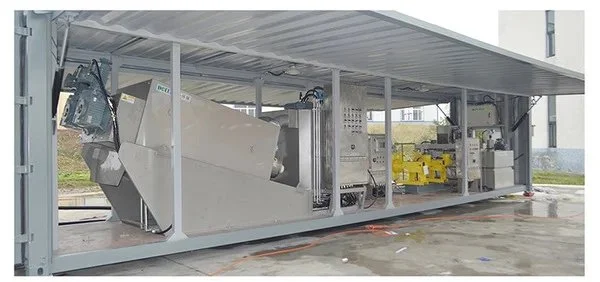
1. Operators should be familiar with the structure and working principle of the sludge dewatering machine, and abide by the operating procedures to ensure safe production.
2. Before use, it needs to be inspected and maintained to ensure the normal operation of each equipment.
3. The feed amount of the sludge dewatering machine should be controlled within a reasonable range to avoid equipment failure caused by excessive feed.
4. During the dehydration process, you should pay attention to the operation of the dehydrator and detect and deal with abnormal situations in time.
5. When cleaning, the operating procedures should be followed to avoid damage to the equipment.
6. The maintenance of the sludge dewatering machine should be carried out regularly, including cleaning, lubrication, replacement of wearing parts, etc.
7. When using, attention should be paid to environmental issues to avoid environmental pollution.
The sludge dewatering machine plays an important role in the field of sewage treatment and sludge treatment. Through dehydration treatment, the volume and weight of sludge can be reduced to facilitate subsequent treatment and disposal. When using the sludge dewatering machine, you need to strictly abide by the operating procedures, reasonably arrange the input amount of sludge, and handle the dewatered products and moisture in compliance with regulations to ensure the safe operation of the equipment and the protection of the environment. At the same time, regular maintenance can extend the life of the equipment and improve work efficiency.
https://www.mingyecn.com/Revealing-the-working-process-and-usage-precautions-of-sludge-dewatering-machine.html
A solar panel is a device that converts solar energy into electrical energy and is widely used in many fields around the world today. From homes to businesses, from agriculture to aerospace, they all play an important role. This article will introduce the specific application of solar panels in various application fields and their impact on various fields.

First, solar panels are becoming increasingly common in homes. As interest in renewable energy continues to increase, more and more households are choosing to install solar panels to supply some or all of their household electricity. Not only does this reduce the cost of energy consumption in the home, but it also reduces reliance on traditional energy sources, thereby reducing environmental impact. In addition, some regions have implemented solar power generation subsidy policies to promote the use of renewable energy.
Secondly, solar panels also have a wide range of applications in the commercial field. Many businesses choose to install solar panels on their buildings to reduce energy costs and demonstrate their commitment to sustainability. Some large commercial buildings can even become local energy suppliers by supplying electricity to surrounding communities with electricity generated by solar panels. In addition, some commercial companies also apply solar panels to their product production processes to reduce their reliance on traditional energy, reduce production costs, and improve the company's environmental image.
In the agricultural sector, solar panels also play an important role. Agricultural land is vast and suitable for installing large-area solar panels. Some farmers choose to install solar panels on farmland or livestock farms to provide clean energy for the farm, and at the same time, excess electricity can be sold to the local power grid to increase the farm's income. In addition, it can also provide power to farms for equipment such as irrigation systems, greenhouse facilities, and agricultural machinery to improve agricultural production efficiency.
In the aerospace field, solar panels also have important applications. Solar panels are widely used on spacecraft such as satellites, space stations, and spacecraft to provide power for these devices. Due to the abundant solar energy resources in space, solar panels have become the main source of power for spacecraft. Some advanced solar panels can even work stably in space for long periods of time, providing continuous power support for spacecraft.
In addition, solar panels also have potential applications in the field of transportation. Some cars and public transportation have begun to use solar panels as auxiliary energy devices to charge onboard electronic devices or provide partial power support. With the continuous advancement of technology, more vehicles may use solar panels in the future, thereby reducing dependence on traditional fuels, lowering transportation costs, and reducing environmental pollution.
In general, solar panels are widely used in various fields, and with the continuous advancement of technology, their application prospects will become broader. The application of solar panels can not only reduce energy costs and reduce dependence on traditional energy but also reduce environmental pollution and promote sustainable development. Therefore, the application of solar panels will continue to play an important role in the future and contribute to the sustainable development of human society.
https://www.fgnexsolar.com/What-are-the-uses-of-solar-panels.html
A 太阳能电池板 是一种将太阳能转化为电能的装置,当今在世界各地的许多领域得到广泛应用。从家庭到企业,从农业到航空航天,它们都发挥着重要作用。本文将介绍太阳能电池板在各个应用领域的具体应用及其对各个领域的影响。

首先,太阳能电池板在家庭中变得越来越普遍。随着人们对可再生能源的兴趣不断增加,越来越多的家庭选择安装太阳能电池板来供应部分或全部家庭电力。这不仅降低了家庭能源消耗成本,还减少了对传统能源的依赖,从而减少了对环境的影响。此外,一些地区还实施了太阳能发电补贴政策,促进可再生能源的利用。
其次,太阳能电池板在商业领域也有广泛的应用。许多企业选择在建筑物上安装太阳能电池板,以降低能源成本并展示其对可持续发展的承诺。一些大型商业建筑甚至可以成为当地的能源供应商,利用太阳能电池板产生的电力向周边社区供电。此外,一些商业公司还将太阳能电池板应用到其产品生产过程中,以减少对传统能源的依赖,降低生产成本,改善公司的环境形象。
在农业领域,太阳能电池板也发挥着重要作用。农业用地广阔,适合安装大面积太阳能电池板。一些农民选择在农田或畜牧场安装太阳能电池板,为农场提供清洁能源,同时可以将多余的电力出售给当地电网,增加农场的收入。此外,还可以为农场灌溉系统、温室设施、农业机械等设备提供电力,提高农业生产效率。
在航空航天领域,太阳能电池板也有重要的应用。太阳能电池板广泛应用于卫星、空间站、航天器等航天器上,为这些设备提供电力。由于太空中太阳能资源丰富,太阳能电池板成为航天器的主要动力来源。一些先进的太阳能电池板甚至可以在太空中长时间稳定工作,为航天器提供持续的电力支持。
此外,太阳能电池板在交通领域也有潜在的应用。一些汽车和公共交通已经开始使用太阳能电池板作为辅助能源装置,为车载电子设备充电或提供部分电力支持。随着技术的不断进步,未来更多的车辆可能会使用太阳能电池板,从而减少对传统燃料的依赖,降低运输成本,减少环境污染。
总的来说,太阳能电池板广泛应用于各个领域,并且随着技术的不断进步,其应用前景将变得更加广阔。太阳能电池板的应用不仅可以降低能源成本,减少对传统能源的依赖,还可以减少环境污染,促进可持续发展。因此,太阳能电池板的应用将在未来继续发挥重要作用,为人类社会的可持续发展做出贡献。
https://www.fgnexsolar.com/What-are-the-uses-of-solar-panels.html
Improving the processing speed of EDM machines is an important issue in the modern manufacturing industry. As the market demand for efficient production continues to increase, manufacturers need to constantly seek ways to increase the processing speed of EDM machines to improve production efficiency, reduce costs, and remain competitive. This article will explore some methods to improve the processing speed of EDM machines, including technological innovation, process optimization, and equipment maintenance.
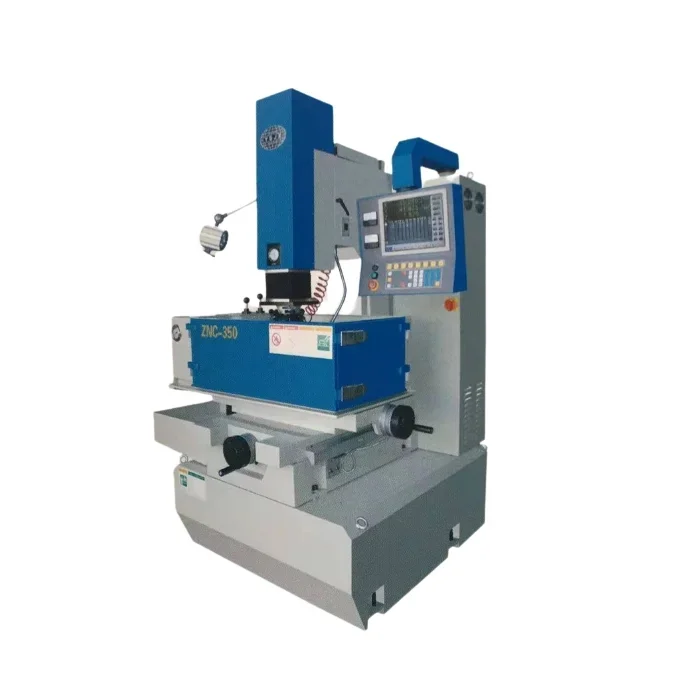
First of all, technological innovation is the key to improving the processing speed of EDM machines. With the continuous advancement of science and technology, the emergence of new materials and new processes provides new possibilities for the processing speed of EDM machines. For example, the use of advanced electrode materials and electrode designs can improve discharge efficiency, thereby speeding up processing.
Secondly, process optimization is also an important means to improve the processing speed of EDM machines. By optimizing processing parameters, improving processing paths and improving processing stability, the processing speed of the EDM machine can be effectively increased. For example, rational selection of discharge parameters, optimization of workpiece fixation methods and improvement of process flow can increase processing speed without affecting processing quality. In addition, the use of automated control systems and intelligent processing techniques can also improve processing efficiency.
Equipment maintenance is the key to ensuring long-term stable high-speed processing of EDM machines. Regular maintenance to maintain the good condition and stability of the equipment can effectively increase the processing speed and extend the service life of the equipment. For example, measures such as regular cleaning and replacement of filter elements, inspection and calibration of processing systems, and timely repair of equipment failures can ensure the normal operation of the EDM machine, thereby increasing the processing speed.
Improve the quality of working fluid. Working fluid is an indispensable part of EDM machine processing. It can cool, clean, and remove oxides on electrodes and workpieces. Therefore, improving the quality of working fluid is also one of the important means to increase processing speed.
Improve the accuracy of machine tools. The accuracy of machine tools will also affect the processing speed. If the accuracy of the machine tool is not high, errors will occur during the processing, which will affect the processing efficiency. Therefore, improving the accuracy of machine tools is also one of the important means to increase the processing speed of EDM machine tools.
To sum up, improving the processing speed of EDM machines is a comprehensive project that requires efforts in many aspects such as technological innovation, process optimization and equipment maintenance. Only by constantly exploring new technologies and methods, and constantly optimizing processes and equipment, can we better meet the market's demand for efficient production, improve the processing speed of EDM machines, and make greater contributions to the development of the manufacturing industry.
https://www.jsxlskcnc.com/How-to-improve-the-processing-speed-of-EDM-machine.html
The perfume spray pump is a common cosmetic packaging container. Its packaging and transportation methods are crucial to ensuring product quality and customer experience. In this article, we will explore how perfume spray pumps are packaged and shipped, and how to ensure the safety and integrity of the product during transportation.
Packaging method of perfume spray pumpThe packaging method of perfume spray pump is usually divided into two parts: inner packaging and outer packaging. The inner packaging refers to the packaging material directly wrapped on the perfume spray pump, usually plastic film or foam. The function of the inner packaging is to protect the appearance and structure of the perfume spray pump and prevent it from being damaged by collision and friction during transportation.
Outer packaging refers to putting the inner packaged perfume spray pump into an outer packaging box, usually a carton or plastic box. The function of the outer packaging is to protect the inner packaging of the perfume spray pump from leakage or damage caused by extrusion and vibration during transportation.
When choosing the packaging method for a perfume spray pump, you need to take into account the characteristics of the product and the transportation distance. If the product is easily affected by the external environment, such as temperature, humidity, etc., then a more rigorous packaging method needs to be selected. If the transportation distance is long, you need to choose more sturdy and durable packaging materials.
Regarding the transportation method of the perfume spray pump, the safety and stability of the product need to be taken into consideration. Generally speaking, there are three main modes of transportation for perfume spray pumps: land transportation, sea transportation, and air transportation. For land and sea transportation, packaging needs to take into account the vibration and pressure that products are subjected to during long-distance transportation, so packaging materials need to have certain compression resistance and cushioning properties. For air transport, due to the short transportation time, packaging mainly needs to take into account the safety and convenience of the product during loading, unloading, and transportation.
In order to ensure the safety and integrity of the perfume spray pump during transportation, the following measures need to be taken:
1. Choose appropriate packaging materials and packaging methods to ensure that the perfume spray pump is not affected by collision, friction, extrusion, and vibration during transportation.
2. Add cushioning materials, such as foam plastics, air cushions, etc., to the packaging to increase the shock resistance and durability of the perfume spray pump.
3. Add waterproof materials, such as plastic bags, waterproof paper, etc., to the packaging to protect the perfume spray pump from moisture erosion.
4. Add moisture-proof agents, such as desiccant, moisture-proof paper, etc. to the packaging to protect the perfume spray pump from moisture.
5. Add labels and warning signs to the packaging, such as "fragile items", "handle with care", etc., to remind transport personnel to pay attention to the fragility and importance of the packaging.
In short, the packaging and shipping methods of perfume spray pumps are crucial to product quality and customer experience. Choosing appropriate packaging materials and packaging methods, and taking corresponding measures can effectively protect the safety and integrity of the perfume spray pump during transportation and provide customers with a better product experience.
https://www.jinbaosprayer.com/Perfume-Spray-Pump-Packaging-and-Shipping-Methods.html
